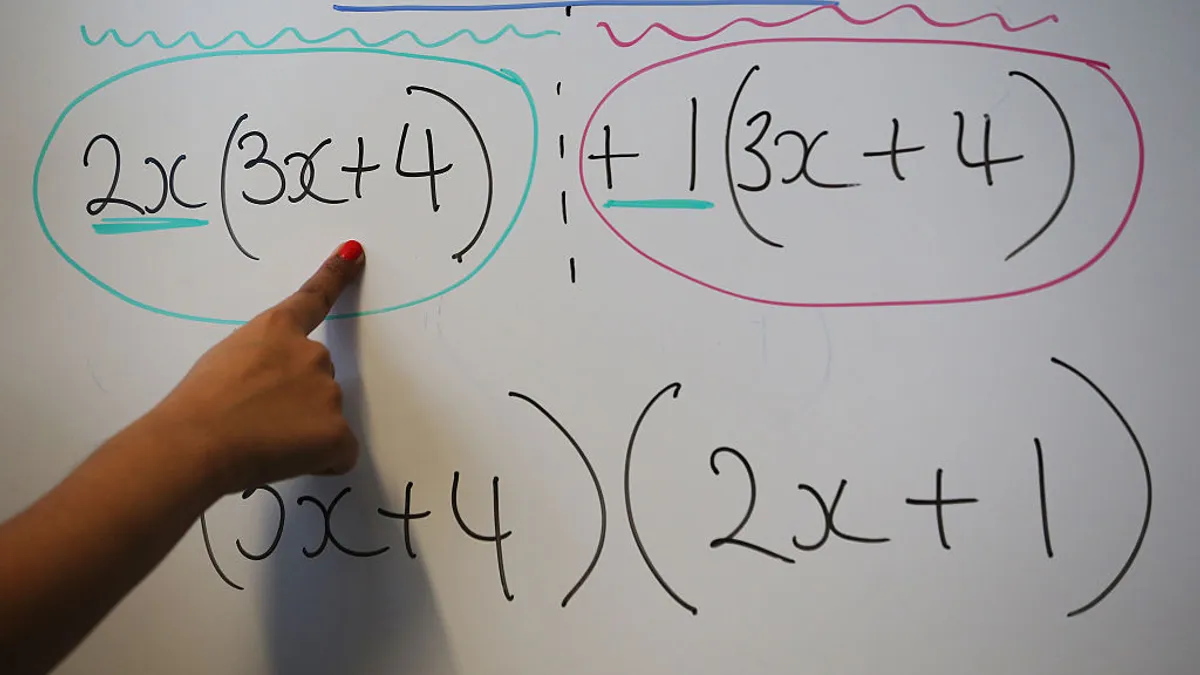Dive Brief:
- When 9th grade students who performed below grade level in math were placed in Algebra I rather than a remedial course in California’s Sequoia Union High School District, 11th grade math achievement rose significantly, according to a working paper published in October by the Annenberg Institute at Brown University.
- The study also found that coupling higher expectations for low-performing students with additional teacher supports also improved attendance, student retention and overall math credits.
- Before the Algebra Initiative, the district would assign students to 9th grade math classes according to their middle school scores, resulting in what the study’s authors noted were segregated classrooms.
Dive Insight:
“Because incoming Black and Hispanic freshmen were disproportionately likely to be classified as having ‘below grade-level’ proficiency, this practice resulted in ethnoracially stratified math enrollment,” wrote study authors Thomas Dee, a professor at Stanford University’s Graduate School of Education, and Elizabeth Huffaker, a research fellow with the National Student Support Accelerator at Stanford.
“The A1 Initiative aimed to redress disparities without reducing achievement for any student group using two key strategies.”
Professional training for teachers proved critical to the study’s results, helping teachers create “math language routines” for the classes, wrote the authors. This support included 15 days of professional development, an additional planning period, four coaching days for each site every semester and other resources.
The initiative also emphasized a specific approach for all students that focused on requiring them to show their reasoning for work and gave teachers some ownership over the pace and planning of lessons. Educators also consistently instilled a growth mindset for students, whether they entered the class ready to tackle that level of math or were not quite as strong yet.
“Specifically, they encouraged all students to proceed to Geometry and stay on the grade-level track,” the authors wrote.
Further, the authors found that mixing different levels of mathematics ability did not negatively affect progress for students who were already at grade level for the class. Ultimately, the authors suggest the experiment showed that including multiple levels of high school math students in a class can have a positive impact for learners at all achievement levels.
“The Initiative, therefore, presents a provocative proof point for high-school math classes in which students with disparate levels of prior math achievement excel together,” the authors wrote.







 Dive Awards
Dive Awards





